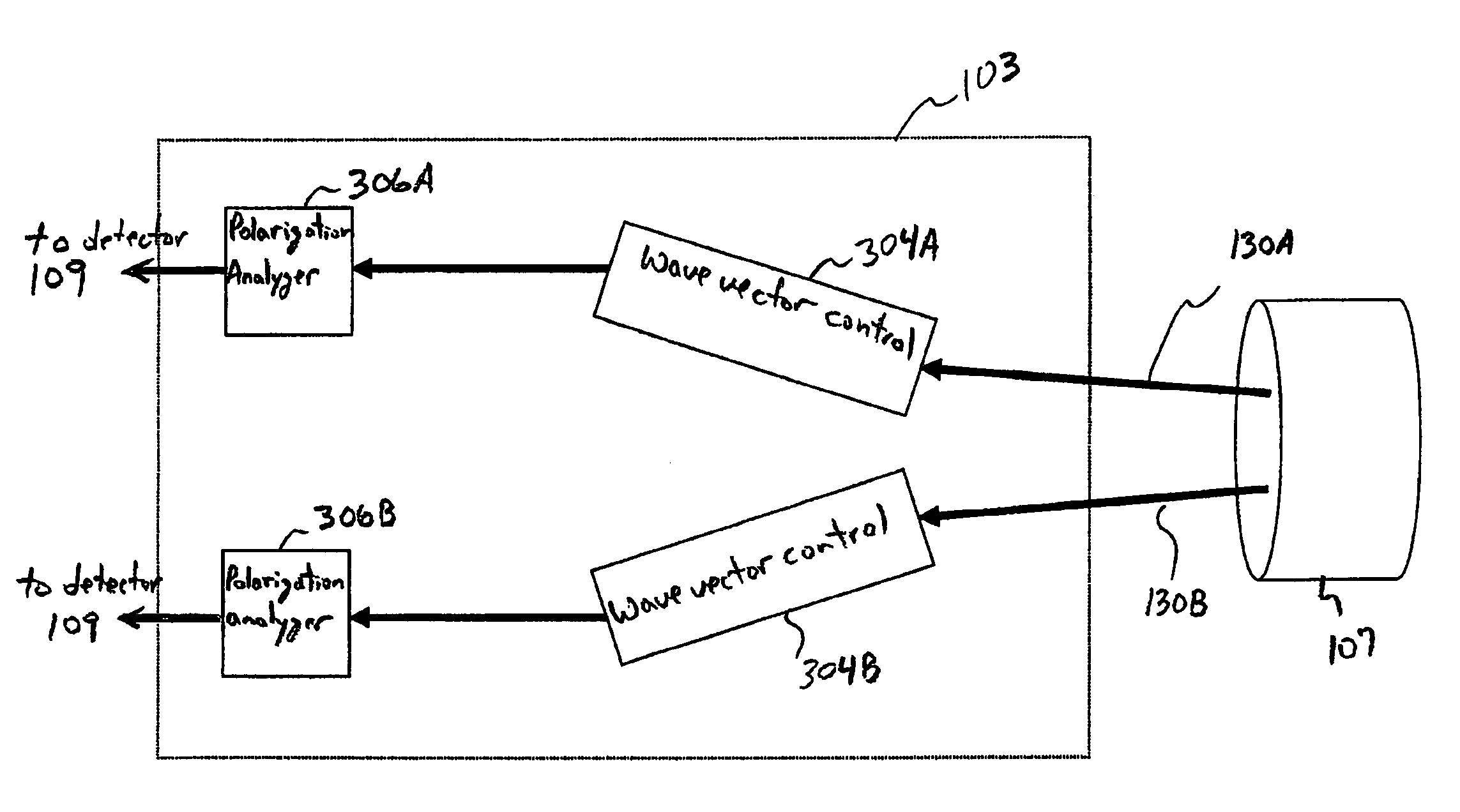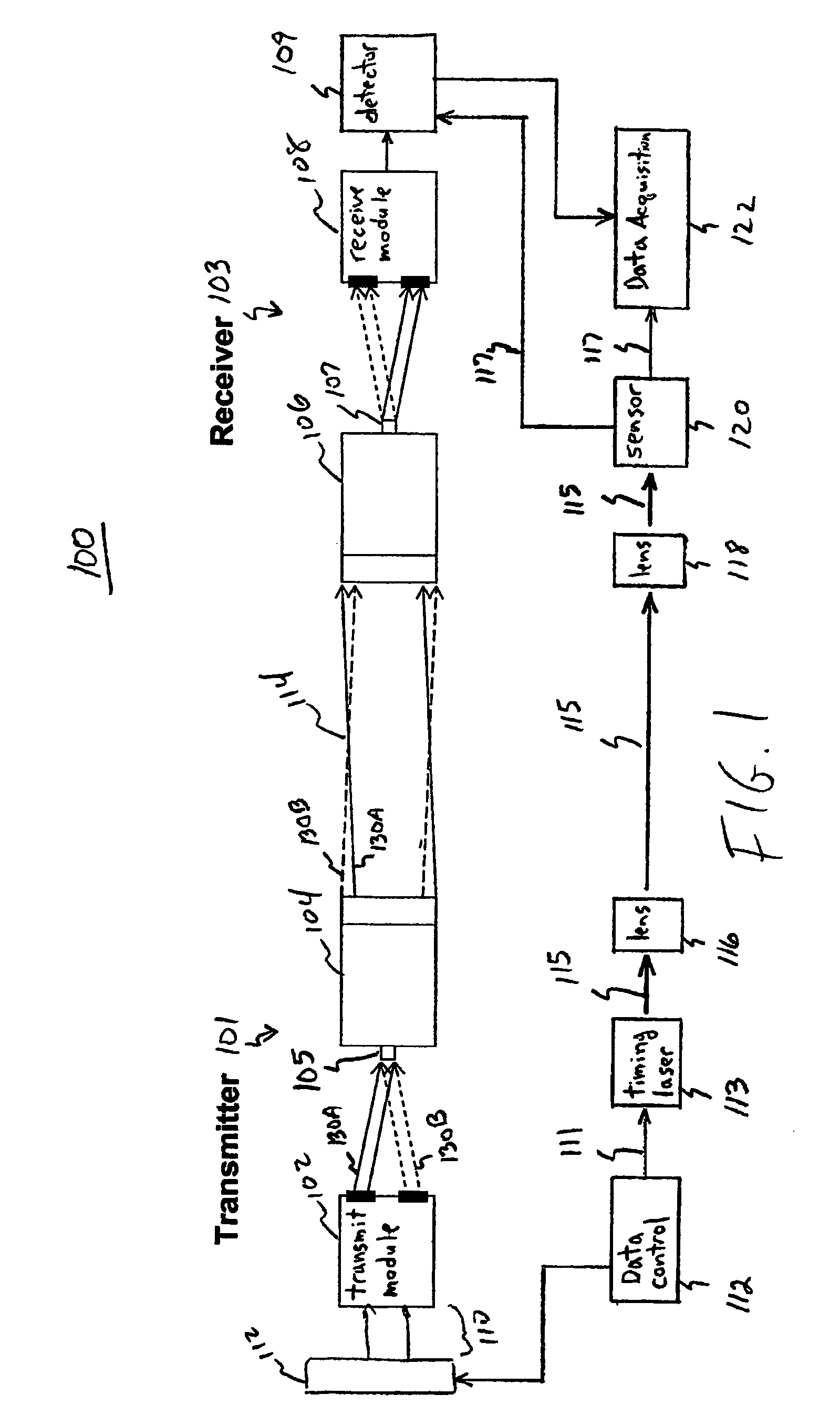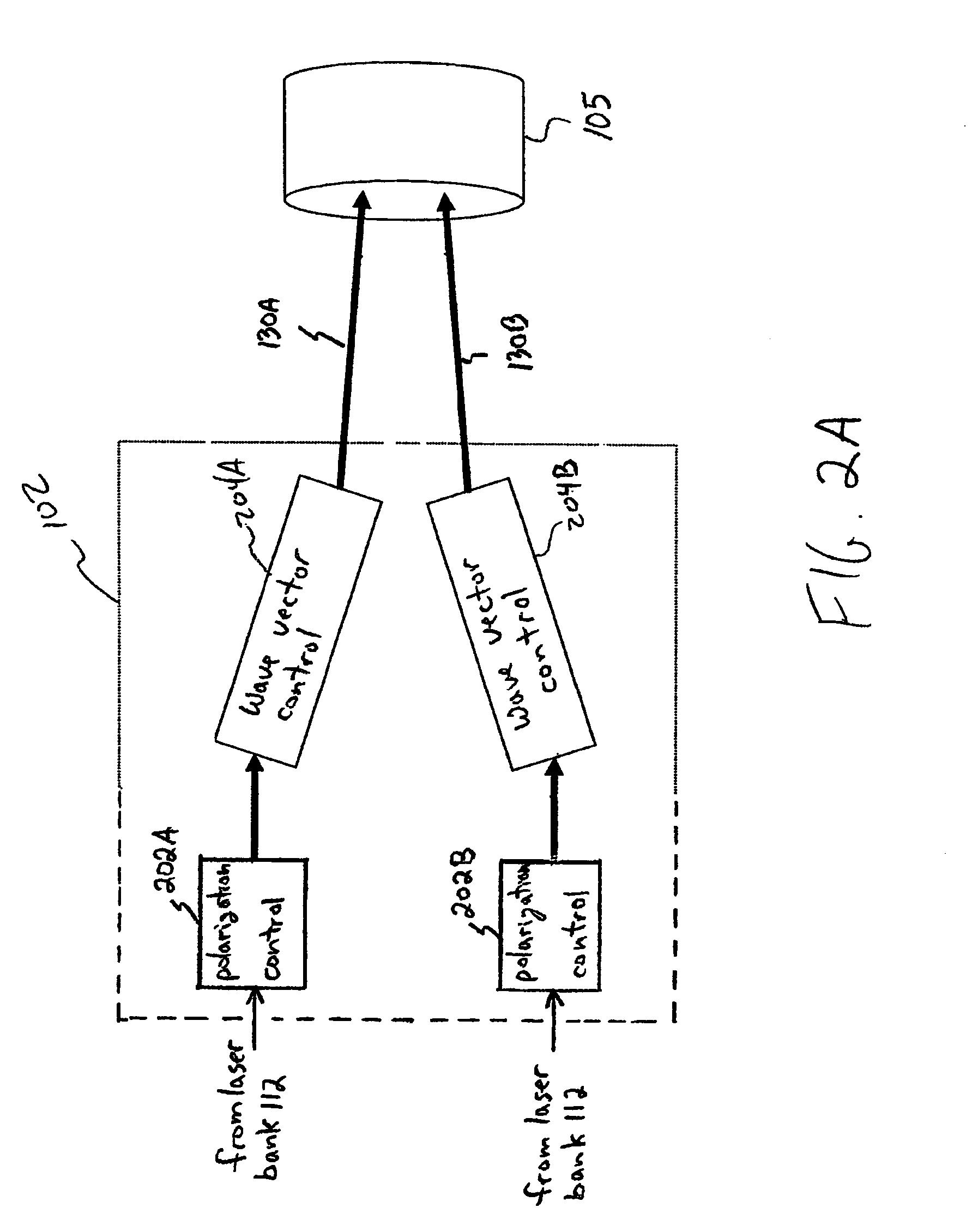System and method for wave vector multiplexed laser communication
a laser communication and wave vector technology, applied in the field of free space optical communication, can solve the problems of limited throughput in the current free-space optical communication system, prohibitive current methods of increasing the throughput of free-space optical systems, and slow quantum cryptography throughpu
- Summary
- Abstract
- Description
- Claims
- Application Information
AI Technical Summary
Benefits of technology
Problems solved by technology
Method used
Image
Examples
Embodiment Construction
[0027]Table of Contents
[0028]I. Overview[0029]A. Uniplex Laser Communications[0030]B. Quantum Cryptography[0031]C. Wavelength Division Multiplexing
[0032]II. Wave Vector Division Multiplexing
[0033]III. Application of WVDM to Quantum Cryptography[0034]A. Method and System Components[0035]B. Practical Implementation of a Specific Embodiment
[0036]IV. Combination of WVDM and WDM
[0037]V. Conclusion
I. Overview
[0038]While specific configurations and arrangements are discussed, it should be understood that this is done for illustrative purposes only. A person skilled in the relevant art will recognize that other configurations and arrangements can be used without departing from the spirit and scope of the present invention. It will be apparent to a person skilled in the relevant art that this invention can also be employed in a variety of other applications.
[0039]A. Uniplex Laser Communications
[0040]Uniplex laser communications are communications transmitted via a single laser beam. Because ...
PUM
 Login to View More
Login to View More Abstract
Description
Claims
Application Information
 Login to View More
Login to View More - R&D
- Intellectual Property
- Life Sciences
- Materials
- Tech Scout
- Unparalleled Data Quality
- Higher Quality Content
- 60% Fewer Hallucinations
Browse by: Latest US Patents, China's latest patents, Technical Efficacy Thesaurus, Application Domain, Technology Topic, Popular Technical Reports.
© 2025 PatSnap. All rights reserved.Legal|Privacy policy|Modern Slavery Act Transparency Statement|Sitemap|About US| Contact US: help@patsnap.com



